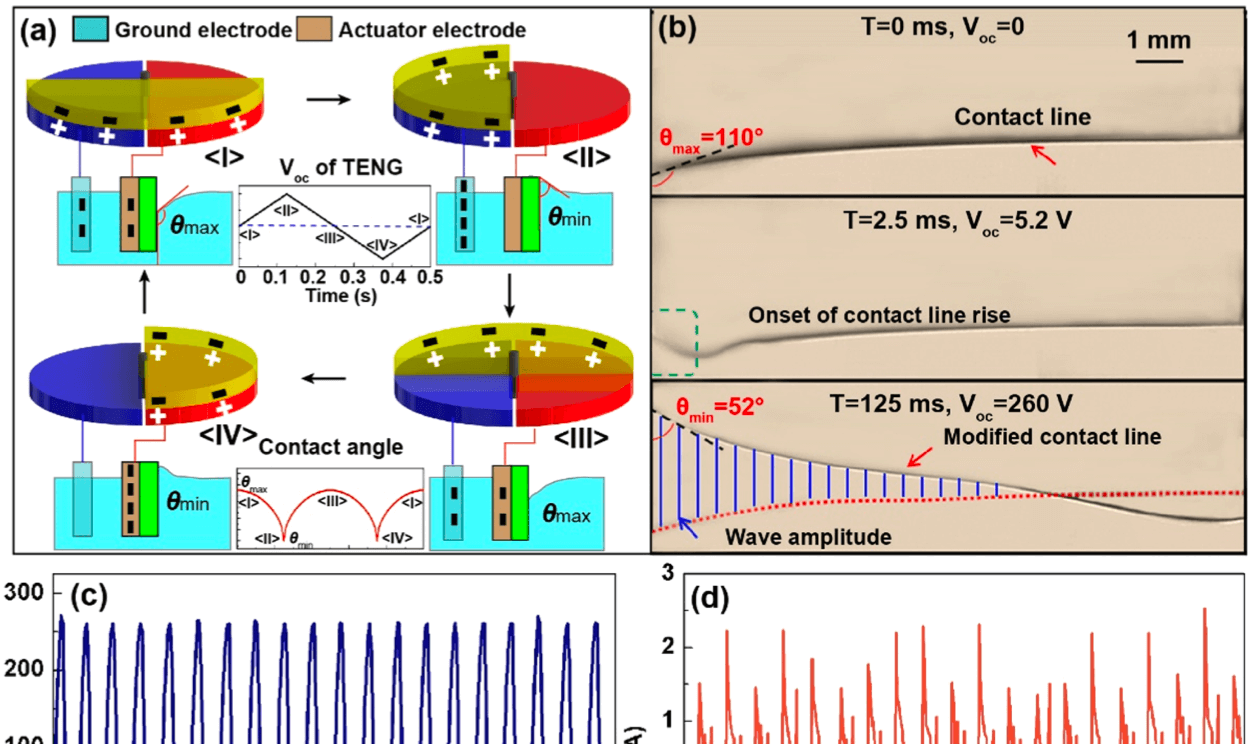Abstract
Aquatic microbots have drawn great research interest due to the demands in aquatic environmental monitoring, inspection, and confined space exploration. Current actuation methods heavily rely on mechanical motion powered by large-amplitude and high-frequency sources, which limit the applications with portability and concealment requirements. Herein we propose a triboelectric nanogenerator (TENG)-enabled electrowetting-on-dielectric (EWOD) actuator (TENG-EWA) for aquatic microbots. The transferred tribo-charges of a disc TENG alternatively modify the surface energy of the EWOD actuator, yielding a capillary wave propagation. The reaction force of the capillary wave actuates the microbot on the water surface. The characteristics of the TENG induced capillary wave are analyzed experimentally and modeled theoretically. An optical transparent microbot (weight of 0.07 g, body length of 1 cm) was actuated forward at a maximum locomotion velocity of 1 cm/s. Diverse locomotion functions are demonstrated: with a load of 3 times to the robot net weight, in seawater, at a silicone-oil/deionized water interface. Besides, the locomotion of the microbot was demonstrated by a wind-driven TENG, and a good concealment performance was achieved under infrared camera and decibel meter. The proposed aquatic TENG-Bot not only shows the potential of converting environmental energy into actuation force for microbots but also reveals advantages in optical, sonic, and infrared concealment.

